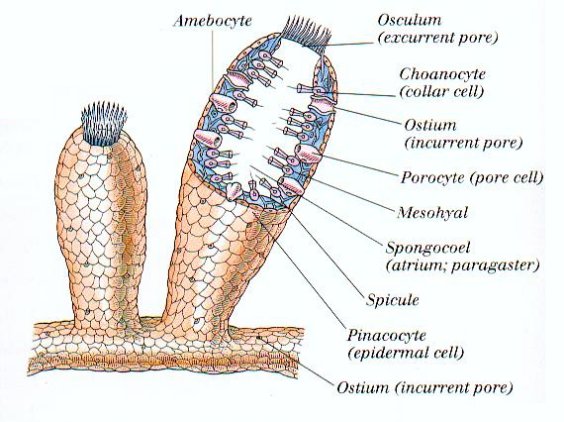The sponge is one of the most primitive of all animals. They do not move and live by filtering the debris from the water. They don't have a brain, and for that matter, they don't have neurons, organs, or even tissues. 12th. The 2009 sponge has no nervous system, but the sponge has genes that represent many of the families of secretory molecules that are specific to the nervous system of other animals. This suggests that these molecules have different functions in sponges, and that sponges are rich but still have unknown secretory biology. It is a cell consisting of three basic parts: flagella, collar, and cell body. The sponge uses flagella to move when it is a larva. The flagella and collar come together to collect food. Sponges use choanocytes during breeding. General characteristics of sponges: All sponges are aquatic, mostly marine except for the freshwater spongillidae. They are stalkless, tend to sit, and grow like plants. Advertisement: The body shape is like a vase or cylinder and is asymmetrical or radially symmetrical. Other items.
Polyfera is a "sponge phylum" that lives in the marine environment. The word polyfera comes from the Latin word for "bearing hole". They are multicellular organs, but they do not have organelles. That is, there is no brain. As a result, sponges have no nervous system.
Is the nervous system found in sponges?
The origin of the human nervous system found in sponges. This glass sponge was found in the Weddell Sea. The natural bath sponge you use to scrub your body may not have a nervous system, but its cells carry many of the genes needed to make it.
How does the sponge work?
The sponge does not move, does not require the central nervous system, it is their own cells to detect and are reorganized according to environmental changes and the function of these stimuli. But how do jellyfish, which belong to the edge of cnidaria, move when they have the ability to move because they do not have a central nervous system?
What are the characteristics of sponges?
The body of a sponge is composed of a non-living jelly-like mass sandwiched between two major layers of cells. There is no clear symmetry. The body is multicellular, has few tissues, and has no organs. Cells and tissues surround a water-filled space, but there is no true body cavity. There is no sexual or asexual reproduction, the nervous system.
Does the sponge have a circulatory system?
The sponge does not have a clear circulatory system, respiratory system, digestive system, or excretory system. What they do is have a water flow system to support all these features. They filter food particles from the water flowing through them. So do they have those systems? Not such a sponge!
Does the sponge have a weakened nervous system?
The exception is sponges. They are still one of the oldest surviving animal groups and are probably the oldest. And they don't have a nervous system. 2021
Does the sponge have a nervous system?
The sponge does not have a nervous system, digestive tract, or circulatory system. They have no muscles. Sponges are very primitive and appear to be coral-advanced and have been around for at least 600 million years.
Does the sponge have nervous tissue?
The absence of nervous and muscular tissue indicates that the sponge must have been one of the earliest forms of evolution. 2. The lack of tissue indicates that the tissues of the body would have been only at the cellular level if the cells had not formed dense tissue.
How does a sponge live without a brain?
The brain requires a lot of energy, and many of these simple creatures could not survive if they had to supply energy to the brain. In the case of sponge, there is no brain, digestive system, nervous system, or circulatory system. They simply filter the water for nutrients that have a finger-like structure called cilia.

Below you will find two helpful answers on a similar topic. 👇
What is the nothingness blind people see?Does sponges have a heart?
